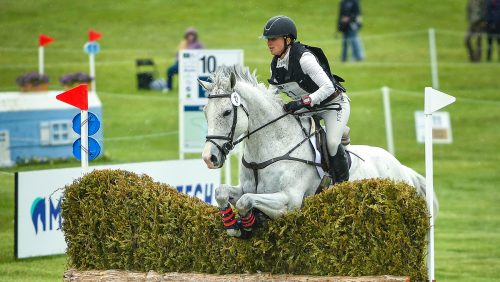 For this week’s Annual Eventing Issue, we decided to focus on the biggest challenge event riders and trainers have today (one that’s even bigger than the three-day short format). That challenge is training themselves, their students and their horses to enjoy the heart of the sport–going across the countryside–as the opportunity to do that becomes ever more circumscribed.
For this week’s Annual Eventing Issue, we decided to focus on the biggest challenge event riders and trainers have today (one that’s even bigger than the three-day short format). That challenge is training themselves, their students and their horses to enjoy the heart of the sport–going across the countryside–as the opportunity to do that becomes ever more circumscribed.
That’s why the only “cross-country” an increasing number of eventers know requires shipping to a course with specially constructed jumps to school. So, in our lead article, “A Shrinking Landscape Makes Learning To Ride Across Country So Much Harder” (p. 8), author Annie Eldridge gets advice from five trainers, while David O’Connor devotes his Between Rounds column (p. 58) to a lesson on what to do if you can’t go hack through rolling fields and along meandering wooded trails any time you want.
But the challenge goes beyond eventing. Where is your horse going to be turned out? Where is your hay and grain going to come from? I hope we’ll never reach the point where there’s nowhere at all to grow grains, but the distance between the hayfield and your barn is probably increasing.
And it goes far beyond horses. A mushrooming population is the reason for sprawling development. Many of us remember studying about the effect of population growth on the environment when we were in high school and college. We were basically indoctrinated with the concept that Earth is a finite planet that can support a finite number of organisms, including humans, the organism that uses (and abuses) the most resources. We learned that nature inevitably seeks a balance, and population is knocking that balance out of whack.
ADVERTISEMENT
So we learned about the concept of zero population growth, the idea that today’s population should limit itself to reproducing two children or fewer per couple. It was a concept that I remember being on the agenda of developed countries like ours and of the United Nations. But in the last 10 years or so that concept seems to have been pushed to the back burner. Why? Overpopulation is at the heart of so many of our environmental, economic and political challenges: global warming, habitat loss, pollution, a decreasing ability to produce food because of lost cropland and pasture, and, of course, swallowing up oil and other non-renewable resources.
Curious about this, I “Googled” zero population growth and happily discovered the concept was still alive, although the organization is now called Population Connection, with about 70,000 members. There I found some facts to support my thesis: 1) Every 20 minutes, the world adds 3,500 humans but loses a species of plant or animal (about 27,000 annually); 2) Some 14 of the world’s 15 megacities (10 million people or more) are coastal, with its impact from sewage and waste, draining wetlands, and destroying fish nurseries; 3) the world’s population has grown more since 1950 (to 6.3 billion) than in the previous four million years; 4) The number of people living in 58 U.S. metropolitan areas grew by 80 percent from 1950 to ’90, but the land those cities cover expanded by 305 percent; 5) By 2025, 48 percent of the world will be living in areas of water stress or scarcity; 6) Americans comprise 5 percent of the world’s population (292 million) but consume 25 percent of its resources.
With traffic jams only getting worse, despite more roads through our precious fields and skyrocketing gas prices, I would say it’s up to us to get ZPG back on the table.














